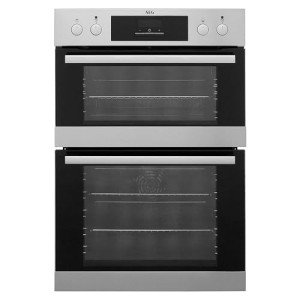The Rise of Built-In Ovens: A Seamless Approach to Modern Cooking
In modern kitchen areas, where style aesthetic appeals blend flawlessly with performance, one device stands apart as a real game changer: the built-in oven. As house owners and chefs alike continue to look for ingenious services that improve their cooking experience, built-in ovens have actually ended up being increasingly popular. This post checks out the advantages, considerations, and patterns surrounding built-in ovens, highlighting why they are a necessary feature in modern cooking spaces.
What is a Built-In Oven?
A built-in oven is a cooking area home appliance designed to be integrated into the cabinets of a cooking area instead of standing alone. Unlike built in ovens and microwaves Ovens And Hobs freestanding ovens, which can be moved and positioned anywhere, built-in ovens been available in various styles and sizes to fit specifically within designated areas. Available in single or double setups, these ovens offer a streamlined appearance that matches contemporary kitchen area designs.
Advantages of Built-In Ovens
1. Space-Saving Design
One of the most appealing benefits of built-in ovens is their space-saving design. By integrating the oven into cabinetry, you can free up important counter and floor area. This is particularly helpful in smaller sized cooking areas, where taking full advantage of room is important. Built-in ovens can be installed at eye level, making them more accessible and reducing the requirement to bend down.
2. Visual Appeal
Built-in ovens contribute to a streamlined and cohesive kitchen area design. Readily available in different surfaces-- such as stainless steel, black, white, and custom-made cabinets-- they can blend effortlessly into the total decoration. This aesthetic appeal boosts the kitchen's visual harmony and raises the area, producing a modern-day and advanced environment.
3. Boosted Functionality
Lots of built-in ovens come geared up with innovative cooking innovations, such as convection cooking, steam ovens, and clever features. These enhancements enable flexible cooking choices, making it easier to accomplish professional-level results at home. Smart built-in ovens can even connect to Wi-Fi, making it possible for users to control the oven remotely, get alerts, and access a variety of cooking programs and dishes.

4. Improved Ventilation
Due to the fact that built-in ovens can be integrated with kitchen area hoods and ventilation systems, they can assist maintain better air quality and minimize cooking odors. This is particularly considerable for those who like to prepare with fragrant spices and ingredients, as an efficient ventilation system can keep the kitchen comfortable and inviting.
5. Customization Options
Built-in ovens offer a wide range of modification alternatives to fit individual cooking designs and needs. From professional-grade appliances with several cooking modes to compact styles for smaller kitchen areas, homeowners can select the oven that fits their specific requirements. Many manufacturers also use adjustable front panels, permitting you to match the oven's appearance to your kitchen cabinetry for a truly unified appearance.
Considerations When Choosing a Built-In Oven
While built-in ovens have lots of benefits, there are very important factors to consider to remember before buying:
1. Rate
Built-in ovens typically include a higher cost than their freestanding counterparts due to their style and setup requirements. It's important to consider both the expense of the oven and any extra costs connected to cabinets modifications or setup.
2. Installation Requirements
Installing a built-in oven typically needs expert support, specifically if you need to modify existing cabinetry. Make sure that you think about any costs associated with installation, consisting of labor and potential kitchen cabinetry adjustments.
3. Size and Dimensions
Before buying a built-in oven, determine the designated space precisely to ensure an appropriate fit. Built-in ovens come in numerous sizes and configurations, so choosing one that lines up with your requirements and kitchen design is important.
4. Lifestyle and Usage
Consider your cooking practices and requires when selecting a built-in oven. If you regularly host large gatherings, a double oven may be more useful. On the other hand, if you have a compact kitchen, a single-wall oven may be enough.
Patterns in Built-In Ovens
The cooking area appliance market is constantly evolving, and built-in ovens are not exempt from emerging trends. Some present trends include:
Smart Technology Integration: With the rise of wise home technology, built-in ovens now typically include connectivity alternatives. This enables users to keep track of cooking development and adjust settings by means of mobile apps.
Energy Efficiency: As sustainability ends up being a top priority, numerous producers are purchasing energy-efficient built-in ovens that reduce energy consumption while maintaining performance.
Multi-functional Designs: Built-in ovens now use functions such as air frying, sluggish cooking, and steaming, providing versatility that satisfies a wide range of cooking techniques.
Conclusion
Built-in ovens unquestionably represent a perfect mix of design, function, and convenience in today's kitchen areas. As more house owners select this modern service, the focus moves to creating a cooking space that is as aesthetically pleasing as it is practical. Whether you are constructing a brand-new home or renovating your kitchen area, thinking about a built-in oven could raise your culinary experience and transform your cooking area into a trendy and practical sanctuary. With a range of options available and continuous innovations in innovation, built-in ovens stay a standout option for both beginner cooks and cooking lovers alike.
